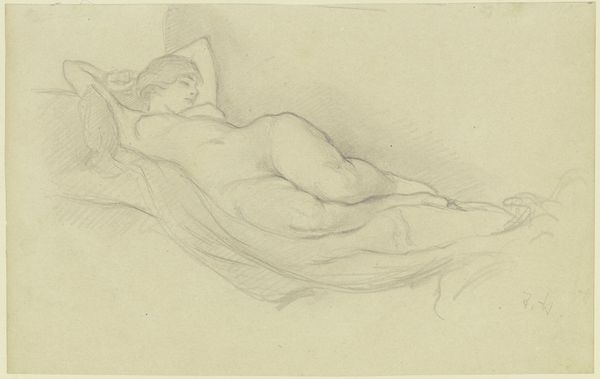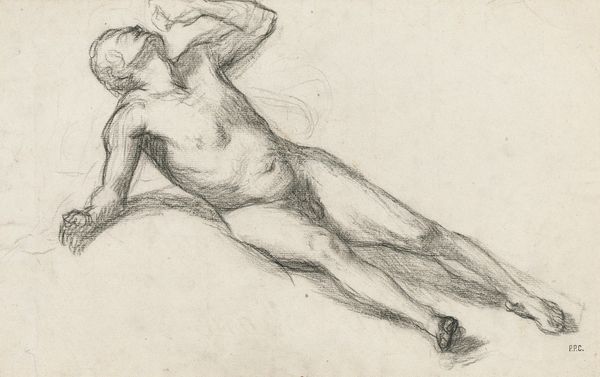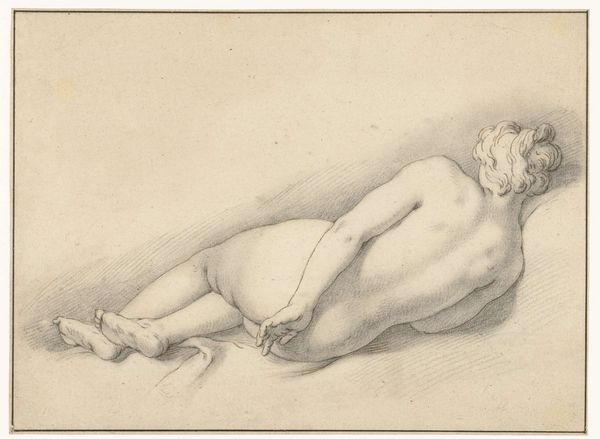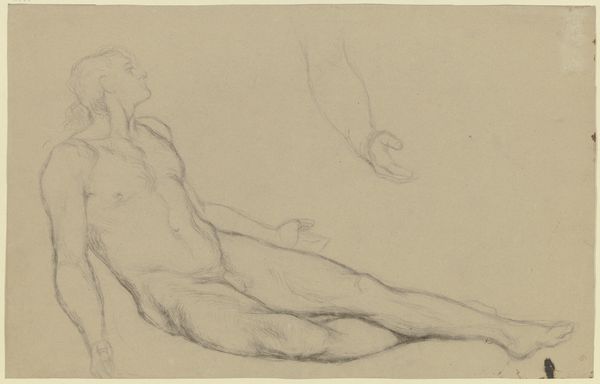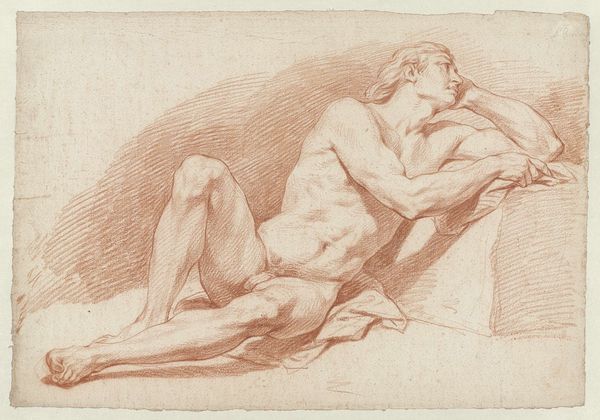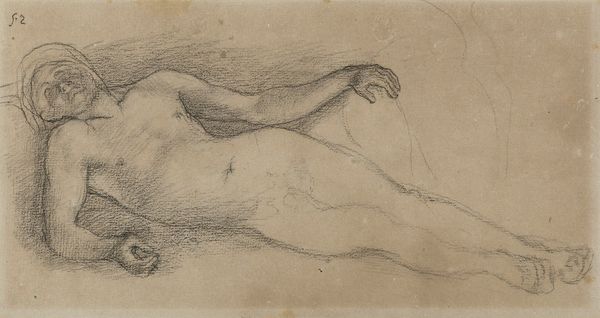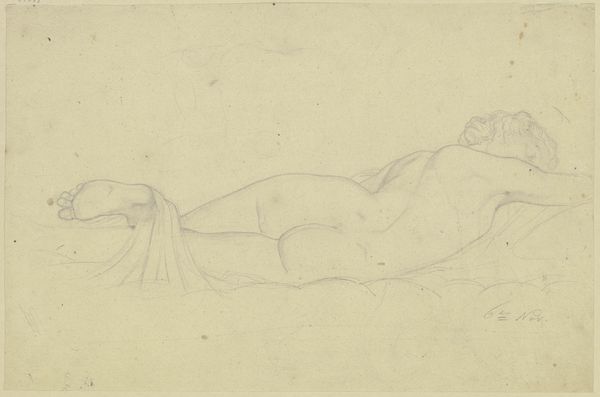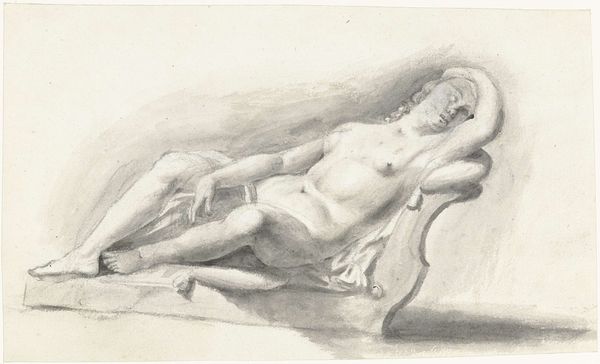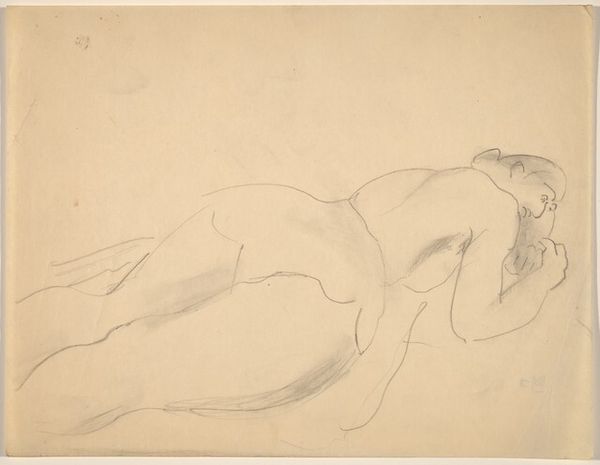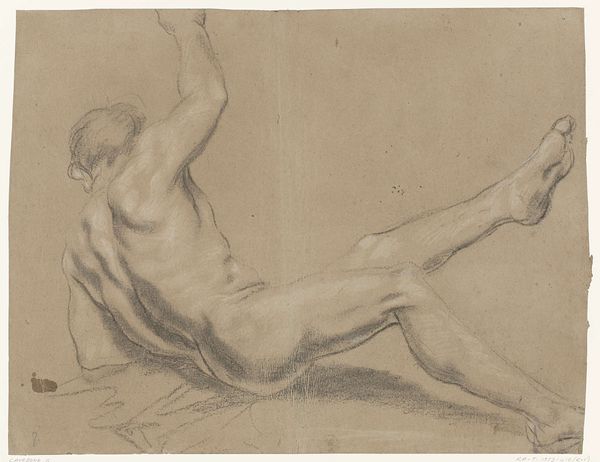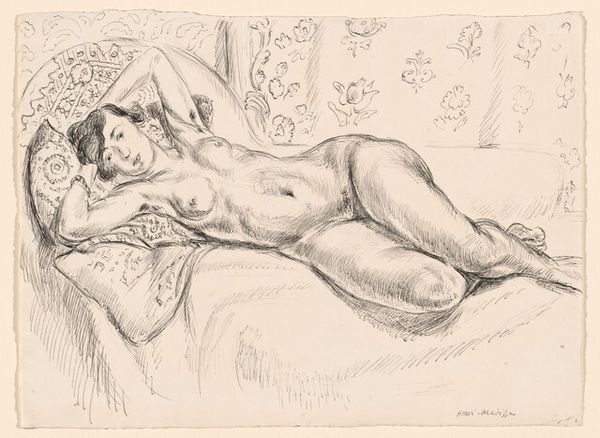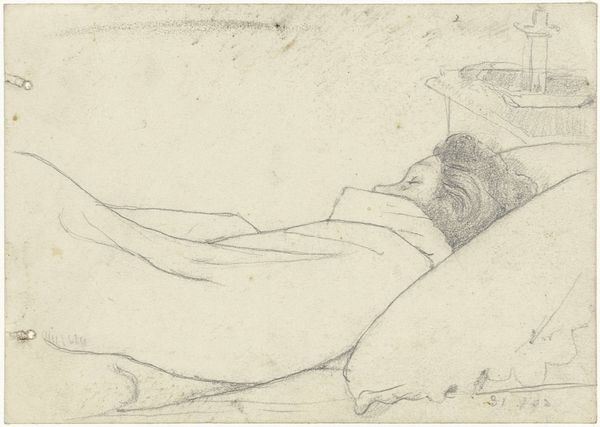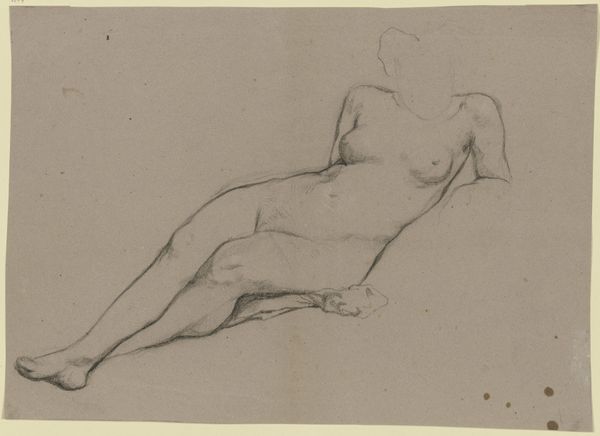
drawing, pencil
#
pencil drawn
#
drawing
#
pencil sketch
#
charcoal drawing
#
figuration
#
pencil drawing
#
pencil
#
academic-art
#
nude
Dimensions: height 190 mm, width 381 mm
Copyright: Rijks Museum: Open Domain
Editor: This is Louis Goudman's "Reclining Female Nude," a pencil drawing from 1934. The soft, grey tones give it a very peaceful feeling. What stands out to me is how classical it feels despite being made in the early 20th century. How do you interpret the piece in relation to art history and the context of its time? Curator: The 1930s were a fascinating period. While abstraction was gaining momentum, academic figure drawing like this one still held a place, particularly within art education. It's a drawing of its time, echoing traditional approaches in contrast with prevailing trends, which raises interesting questions about the institutional role of art training. The nude was, and to some extent still is, a foundational exercise. Why do you think that is? Editor: I guess it was about learning anatomy and how to depict the human form realistically, which was seen as important for any kind of artistic expression. Curator: Exactly. And that very "neutrality" has also been critiqued, since representing the nude body always comes with its own sets of conventions. So how does viewing this drawing today – understanding the historical context surrounding nudes in art and their socio-political implications – affect your initial perception of "peaceful?" Editor: It definitely adds another layer. Knowing how the female nude has been historically portrayed and often objectified makes you see it differently. You start to question who is this "peace" really for. It makes me wonder if there were any conscious or unconscious politics from the artist. Curator: Precisely. Thinking about who has historically been granted access to artistic training and who has been excluded, is essential. That institutional framework really shapes what we consider "art" in the first place. Editor: That's a great perspective. I initially saw the beauty in the technique, but now understand it as something embedded within larger cultural narratives and structures of power. Curator: Absolutely! And that deeper engagement helps us recognize the powerful impact artistic conventions can exert and recognize where change still needs to occur.
Comments
No comments
Be the first to comment and join the conversation on the ultimate creative platform.
